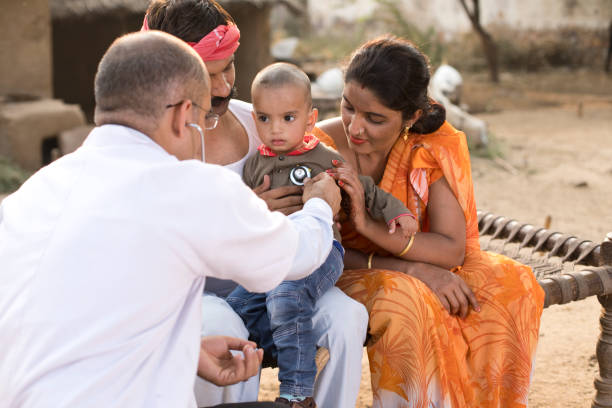In the previous edition of India’s emerging sectors, we discussed India’s renewable energy and fintech sectors. This edition discusses India’s booming healthcare landscape and the expanding E-commerce sector.
Healthcare Landscape of India

Are you thinking of diving into the healthcare industry? India might just be your golden ticket. The sector is witnessing an unprecedented boom with rich opportunities and government support. Here’s a snapshot:
1. Vibrant Growth
- The sector is set to burgeon to US$ 372 billion by 2022 from US$ 110 billion in 2016, a magnificent CAGR of 22%.
- With a conscious shift towards e-health, brace yourself for a market bursting to reach US$ 10.6 billion by 2025.
- Over the next 10 years, National Digital Health Blueprint can unlock the incremental economic value of over $200 Bn for the healthcare industry in India.
2. Affordability & Excellence:
- Low-cost surgeries (1/10th of the West!)
- A hotspot for R&D due to cost-effective clinical research.
- Home to the world’s largest health insurance scheme, Ayushman Bharat.
- India has been ranked 10th in the Medical Tourism Index (MTI) for 2020-21 out of 46 destinations by the Medical Tourism Association.
- In the Economic Survey of 2022, India’s public expenditure on healthcare stood at 2.1% of GDP in 2021-22 against 1.8% in 2020-21 and 1.3% in 2019-20.
3. FDI Friendly: 100% FDI in greenfield projects. For brownfield, up to 100% under government route.
4. Major Hubs: Delhi, Mumbai, Bengaluru, and more.
5. Government Initiatives in Union budget of FY 2023-24:
- A whopping allocation of Rs. 89,155 crore for Health and Family Welfare.
- Rs 3,365 crore ($0.41 billion) was allotted for Pradhan Mantri Swasthya Suraksha Yojana (PMSSY).
- Rs 29,085 crore ($3.51 billion) was given to ambitious plans like the National Health Mission.
- The Pradhan Mantri Jan Arogya Yojana (AB-PMJAY) and Ayushman Bharat (AB) were each given Rs. 7,200 crore ($870 million).
- The recently announced PM-ABHIM (Ayushman Bharat Health Infrastructure Mission), which aims to develop India’s health infrastructure and enhance the nation’s primary, secondary, and tertiary care services, has been given a budget of Rs. 5,156 crore (US$ 675.72 million).
Roadmap ahead for the healthcare sector of India
A horizon where India isn’t just a healthcare destination but a global healthcare powerhouse. Rising incomes, awareness, and the penetration of health insurance are all conspiring to push this vision into reality.
Considering healthcare? Think India!
E-Commerce sector of India

Online shopping is how goods and services are bought and sold through e-commerce. India has seen a growth in the use of smartphones and internet use in recent years. The main factor was the ‘Digital India’ program, which caused a substantial increase in internet connections to 830 million in 2021. 55% of all connections to the internet were in metropolitan areas, and 97% of those connections were wireless.
The number of smartphones has also significantly grown; by 2026, that number is anticipated to be 1 billion. This has aided India’s digital industry, which is anticipated to generate $1 trillion in revenue by 2030. The rapid expansion of smartphone and internet usage in India and rising affluence have aided the country’s e-commerce industry. The e-commerce industry in India has changed how trade is conducted there. The company has opened up several business-to-business (B2B), direct-to-consumer (D2C), consumer-to-consumer (C2C), and consumer-to-business (C2B) areas of the market. Significant markets like D2C and B2B have grown tremendously in recent years. By FY27, the D2C market in India is anticipated to grow to $60 billion.
An important turning point for e-commerce in India was the pandemic-related lockdown and mobility restrictions, which increased demand to record levels, attracted new users to digital marketplaces, and provided players with long-term development. The Indian e-commerce industry was one of the major winners of the pandemic as containment attempts made people aware of the convenience of online shopping and encouraged seasoned online shoppers to make additional purchases.
E-Commerce market size in India
The India E-Commerce Market is projected to expand with a CAGR of 21.5% between 2022 and 2027. Rapid urbanization is one of the main elements influencing the market’s expansion.
- India overtook Canada to become the eighth-largest e-commerce market in 2020, with a revenue of US$ 50 billion, trailing only France. India, with 150 million online shoppers as of FY21, was third in size behind China and the US, and is projected to reach 350 million by FY26. Indian consumers are embracing 5G cellphones more and more, even before the nation officially launches the newest mobile broadband technology. In 2021, 169 million smartphones were shipped, with 5G shipments growing by 555% over the previous year.
- By 2023, India will have over 907 million internet users, or over 64% of its total population, making it the second-largest internet market in the world and boosting e-commerce growth.
Indian Government Initiatives for E-commerce
- Digital Payments & Technology: The Government is backing technologies such as UPI, RuPay, DigiLocker, and eKYC to help promote digital transactions, increase adoption in smaller cities, and drive innovation in this space. The FY22 Budget proposed an INR 1,500 crore scheme to incentivize digital payments financially.
- Digital Infrastructure: E-commerce is set to benefit from government initiatives to boost rural broadband penetration within the ambit of Digital India. BharatNet is one such program, with an outlay of INR ~61000 Crore, aimed to bring broadband connectivity to India’s 2,50,000 Gram Panchayats.
- One District One Product Programme: The Government has launched the ODOP program intending to select, brand, and promote One Product from each District (One District – One of the countries to enable holistic socioeconomic growth across all regions.
- Consumer Protection (E-Commerce) Rules, 2020: Rules delineate roles and responsibilities for the marketplace and sellers and will reinforce competition and efficiency within the Indian e-commerce market. 100% FDI allowed under automatic route in B2B E-commerce and marketplace e-commerce model. 100% FDI under Government approval route for E-Commerce by Food Retail Companies, provided products retailed are manufactured and produced in India.
Road Ahead for the E-commerce sector of India
By 2034, it is anticipated that the Indian E-commerce market will overtake the US as the second-largest E-commerce market in the world. Technological advances, including digital payments, hyper-local logistics, analytics-driven customer engagement, and digital advertising, will probably support the development of the industry. Additionally, India intends to launch the Open Network for Digital Commerce (ONDC). The ONDC will allow e-commerce platforms to display goods and services from every platform while also synchronizing search results across all of them.
Did you miss out on why you should invest in the expanding sectors of fintech and renewable energy? Read here.



